Common privet: description of varieties, planting and care
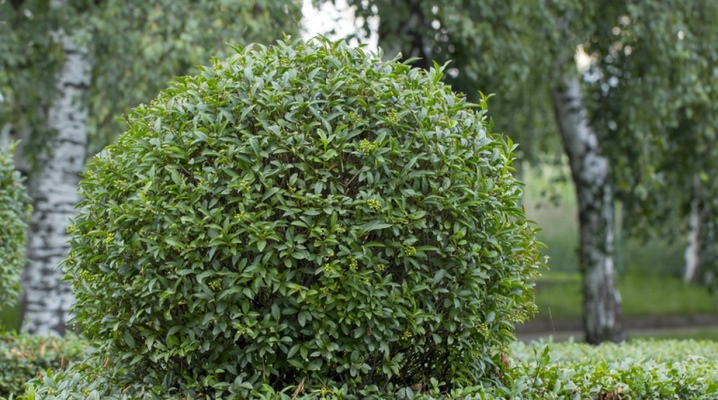
Privet is often used to create perennial garden and park compositions. In our article, we will dwell in more detail on the features of this plant, the most popular varieties, planting rules, care requirements and crop propagation options.
Description
Common privet is more familiar to gardeners under such names as European, as well as wild privet. In its natural environment, this culture grows in southern Europe, as well as in the northern part of the African continent and in Malaysia.
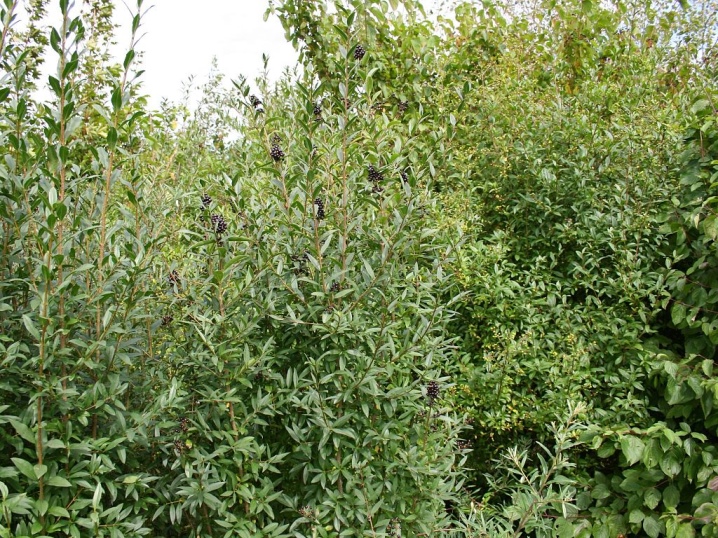
Privet is an ornamental shrub of a deciduous type, the length of which reaches 5 m.
Shoots are usually hard, erect, grayish bark, slightly spotty, with small brownish particles. At a young age, the culture grows rather quickly, then the pace slows down slightly. Leaf plates grow in pairs, arranged crosswise. The shape of the leaves is oval, slightly pointed, the color is dark at the top and slightly lighter at the bottom. The flowers are presented in the form of panicles 5-6 cm long, the flowering is creamy white. As a rule, flowering occurs in July, while the ornamental plant emits a deep, pleasant aroma. Privet fruits visually resemble large black berries with a glossy surface, the size is 6-8 mm.
We draw your attention to the fact that privet berries cannot be eaten - they are poisonous for people.
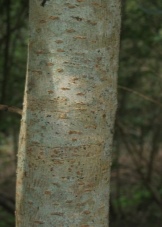
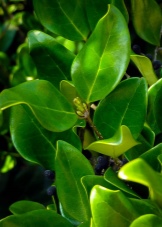
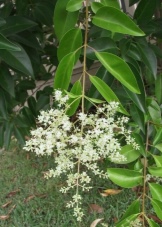
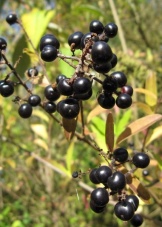
There are three main groups of culture:
- deciduous - these plants shed their leaves with the onset of cold weather;
- evergreen - as the name suggests, these varieties leave leaves on the branches in frosty season;
- mixed - these plants only partially shed their leaves.
Privet is widely used in landscape design to decorate spectacular hedges, this is facilitated by the low growth rate of culture. During the flowering period, the bushes of this plant acquire an additional decorative appearance.



Review of the best varieties
Several varieties of common privet are popular.
- "Aureum" - this variety of privet grows up to 1.5 m, has a decorative color of the leaves: plates of a rich green color with a beautiful golden dusting and a light edging. For maximum color development, the plant requires a location in a sunny area. If this variety is grown in the shade, then the leaves will lose their yellow border. The variety is characterized by high frost resistance and requires shelter only in the coldest winters.
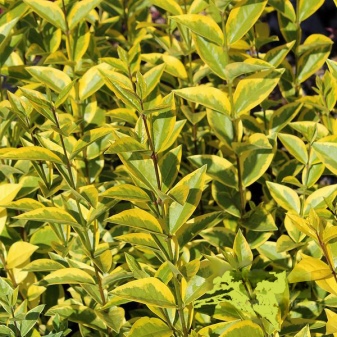
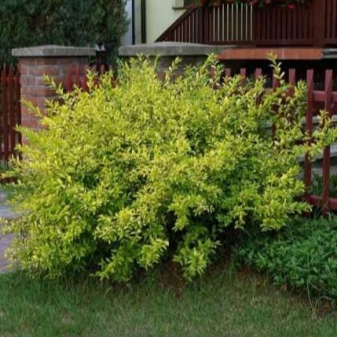
- Glaucum - undersized privet, which grows no more than 1 m. The crown is spreading, the leaves look decorative, they are distinguished by a pronounced strong bloom and a whitish edging around the edges.
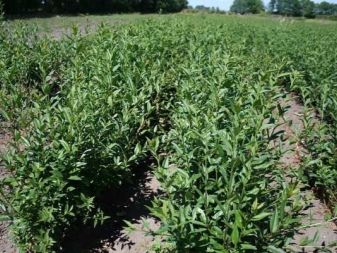
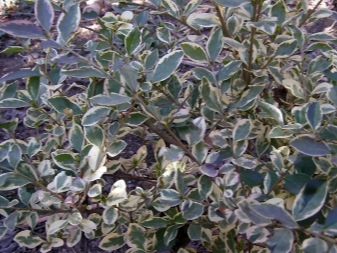
- "Atrovirens" - the variety is characterized by impressive size and dark shades of leaf plates without edging and any spots.
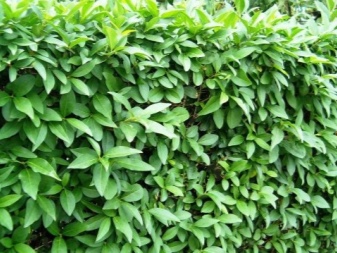
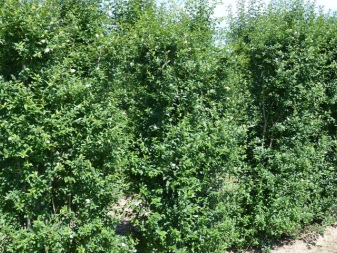
Landing
When planting privet in open ground, it is important to choose the right site. Privet loves bright sunny areas. If the landing site is located near the outbuildings, it is imperative to maintain a distance of 90 cm - such an indent will allow in the future to avoid difficulties that may arise in the process of pruning a shrub.
The optimal period for planting privet in the soil is the beginning of autumn, although summer planting of this plant is also allowed.
Before starting work, it is imperative to dig up the soil at the chosen place to the depth of the shovel bayonet, that is, by about 20-25 cm.The parameters of the hole for each bush should be slightly larger than the dimensions of its roots: the depth should be approximately 35-40 cm, and the width - 50-65 cm. If you are going to plant privet to decorate a hedge, it is best to immediately prepare a trench of the appropriate size.
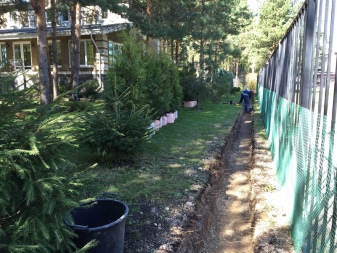
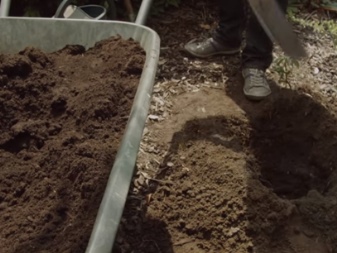
Before planting, the wells should be thoroughly moistened, and after the water is completely absorbed, expanded clay, crushed stone, broken brick or any other drainage should be placed on the bottom so that moisture does not stagnate. A layer of garden soil is poured on top of the drainage with the addition of rotted manure and ready-made mineral fertilizer.
Before transplanting, the seedlings must be removed from the containers and placed in a container with water for 2-3 hours, you can additionally add "Kornevin" or any other growth stimulant.
The prepared plants are carefully placed in the hole, the roots are straightened and sprinkled with soil mixture, tamping it down with your hands.
After the work is completed, it is necessary to water all the seedlings and mulch the soil.

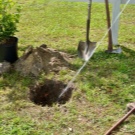

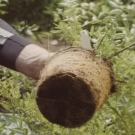
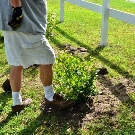

Care
Caring for privet can not be called laborious in any way, since this plant is quite unpretentious. Growing this culture is within the power of even inexperienced gardeners. All that is required of them is just a little attention, and in return the plant will delight its owner with lush greenery and spectacular flowering.
Watering
Privet requires infrequent, but very abundant irrigation. Throughout the growing season, 6 waterings will be enough for plants, while adult plants require about 50 liters of moisture. Young plants need to be watered a little more often, since good hydration determines their high growth rate.

Do not forget about the so-called "dry irrigation", that is, the systematic loosening of the soil in the near-trunk area. The first time the soil should be loosened immediately after the first snow melts, this should be done as carefully as possible so as not to damage the rhizome. Such manipulations significantly improve air flow to the roots. After cultivation, it is advisable to cover the land near the bush with mulch in order to reduce the amount of watering in the future, this will preserve moisture near the roots.
Peat, sawdust, and crushed tree bark are the best in the role of mulch.
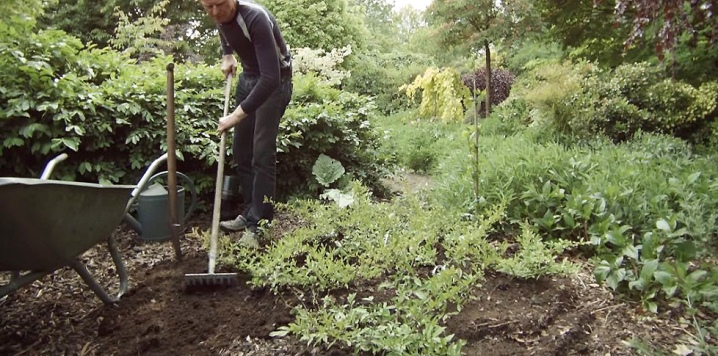
Fertilizers
The active growth of privet, including the formation of a lush crown, largely depends on the quality of the land. That is why the plant needs regular feeding. The first top dressing is carried out in early spring during the first loosening of the earth. At this stage, dolomite flour or lime must be introduced into the ground, since the shrub reacts poorly to acidic soils. During the entire warm season, plants must be irrigated with water mixed with organic and mineral compounds alternately.
Every 3 years, fertilizing with potash formulations should be carried out - they determine the high winter hardiness of the plant (the drug is used in a proportion of 15 g per sq. M).
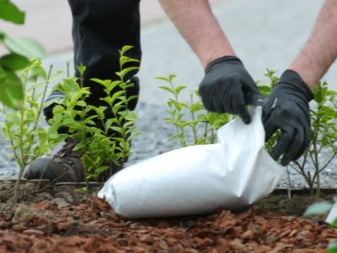
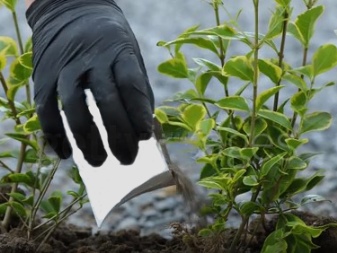
Wintering
In general, privet is characterized by high winter hardiness, therefore she needs additional preparation for the cold season only in Siberia... It includes mulching the soil, in addition, the shrubs can be wrapped with agrofibre - this will allow the plant to easily endure the lowest temperatures. In all other regions, no special training is needed.
But what the privet owners should pay special attention to is its trimming.

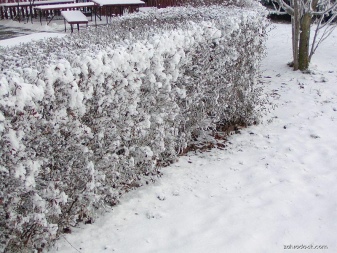
The fact is that this culture has the ability to grow, and if you do not engage in molding, then the bush takes on an unkempt look.
There are several options for trimming the bush.
- Formative. In this case, the haircut is carried out in order to give the privet a certain shape. Usually, this pruning is done after the bush is completely rooted.At this stage, only the apical part of the privet is cut off, this stimulates the active growth of young shoots. The procedure is carried out for several years, during this period the plant is overgrown with a sufficient number of branches, and it can be made in the form of a ball, as well as a cone. Recently, Japanese origami-style moldings have become in demand.

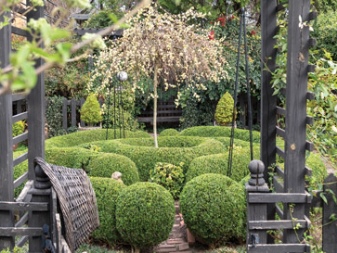
- Creation of a hedge. As part of a hedge, the culture can grow up to 5 m, in temperate latitudes this often leads to freezing of the tops. That is why experienced gardeners recommend growing privet no more than 2 m high. It is advisable to start a haircut at the end of May or at the end of August.
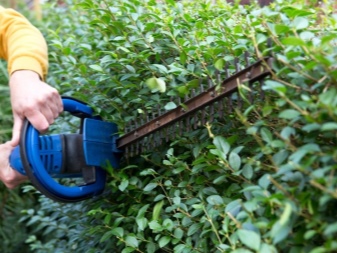
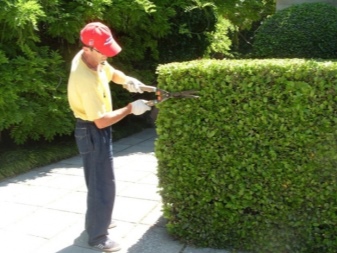
Reproduction methods
Common privet can be propagated by several methods: cuttings, seeds, and also by layering. Let's dwell on each of them in more detail.
Seeds
Reproduction in this way is a very difficult process, since the germination rate of the seeds of this culture is very low (no more than 60%). It should be borne in mind that privet bears fruit only after 6 years of growth in one area. Most often, such reproduction is used by breeders.
For this in the fall, ripe berries are taken, the largest seeds are selected from them and placed in a jar of water... After a while, one part of the seeds remains at the very bottom of the tank, while the other rises. For reproduction, those that remain below are used. In mid-October, they need to be planted in open ground, in winter they will undergo stratification, but the first shoots can be seen only after a year. If you plan to plant your seeds in the springtime, it is best to store them in a container filled with a mixture of peat and clean river sand at around zero degrees.
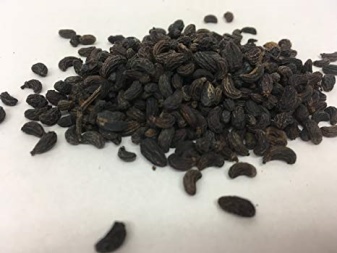
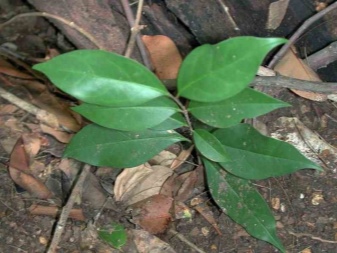
Cuttings
Young shoots are taken for cuttings - they have the maximum rooting potential. Cutting is done at the end of flowering, the length of the workpiece should be approximately 10-15 cm.
The planting material is placed in the turf soil at an angle of 45 degrees to a depth of 5-7 cm. In order for rooting to be as effective as possible, the heating in the room should be maintained at + 22 ... 26 degrees Celsius, as well as high humidity should be provided. Rooted cuttings should continue to grow indoors for one year with regular replanting in larger containers. They can be placed in a permanent place only after they grow to 50-60 cm.


Reproduction by layering
This method is very simple. In springtime, choose the lowest branch, bend it towards the soil and slightly cut the bark. The place of the incision is added dropwise, fixed with hairpins, and moss is placed on top, which must subsequently be constantly kept moist. Next year, the cuttings will give roots - at this moment they can be separated from the mother and transplanted to a permanent site.
There is a way of propagation by layering without dropping... In this case, the branch is scratched with a thin needle in two or three places, and then a plastic bag filled with a moistened substrate is fixed in this area. This method will allow you to control the filling of the bag with roots.
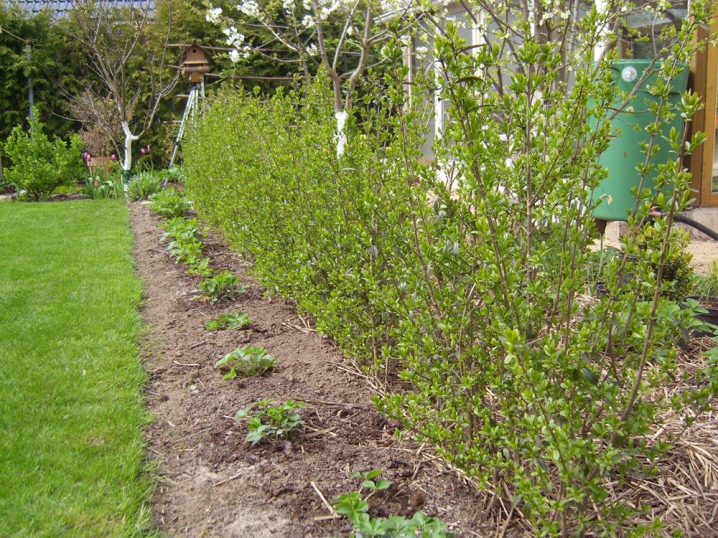
Diseases and pests
Like all other plants, privet is susceptible to attacks by various pests.
Improper care also often causes cultural illnesses. In order to minimize the risk of plant diseases, it is necessary:
- with the onset of summer, identify points of excess growth and cut them off;
- timely pruning of shoots located at right angles;
- finish any trimming of the plant with a fungicidal preparation.
Such measures will allow not only to form a beautiful crown, but also significantly increase the plant's resistance to fungal infections.
It is important to monitor the level of watering without creating excessive moisture, otherwise the root system begins to rot, which quickly leads to the wilting of the entire crop.
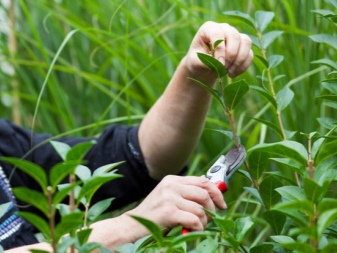
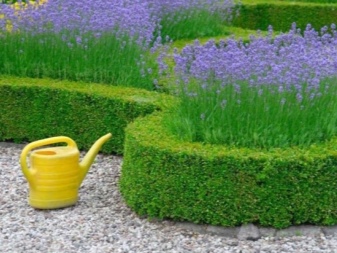
In general, privet is resistant to diseases and pests, however they often fall prey to a spider mite attack: the pest itself is microscopic in size, so it is difficult to see it, but it can be recognized by the thinnest cobweb that appears on the back of the leaf.
No less dangerous for privet shield and false shield - these insects are covered with a shell, when they appear on the leaves, brown plaques appear.
In the fight against parasites, it is best to use fungicidal preparations. And you can also make processing with a concentrated solution of laundry soap.
With excessive moisture or increased acidity of the soil, plants often affected by powdery mildew Is a dangerous disease. For its prevention, it is advisable to add lime or dolomite flour to the substrate.
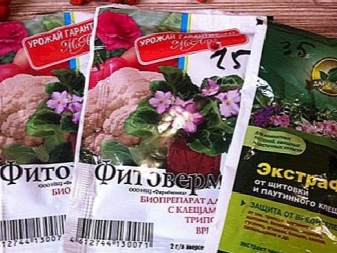

Use in landscape design
Most often in gardening, common privet is grown to create a hedge. The most beautiful privet varieties are Atrovirens, Aureum and Lodense. In order to realize this idea, there is absolutely no need to turn to the services of landscape designers - any gardener can easily cope with the task on his own.
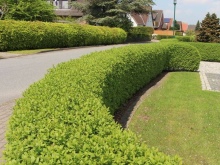
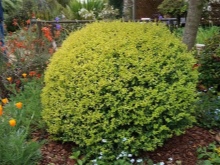
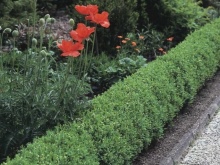
However, in order for privet to become a spectacular decoration of the site, the planting material must be provided with the necessary care. Before planting a young plant in a selected area, it is necessary to designate the place of the future row with a rope stretched parallel to the track where the seedling is planned to be placed. The bushes are planted at a distance of 40-60 cm from each other, while they need to be alternated so that they are directed in different directions with their lush sides.

Many gardeners are familiar with privet, but few people know that this decorative bush can be given the most interesting shapes, so the plants are often grown to decorate all kinds of art objects.




For common privet, see the video.



































































The comment was sent successfully.